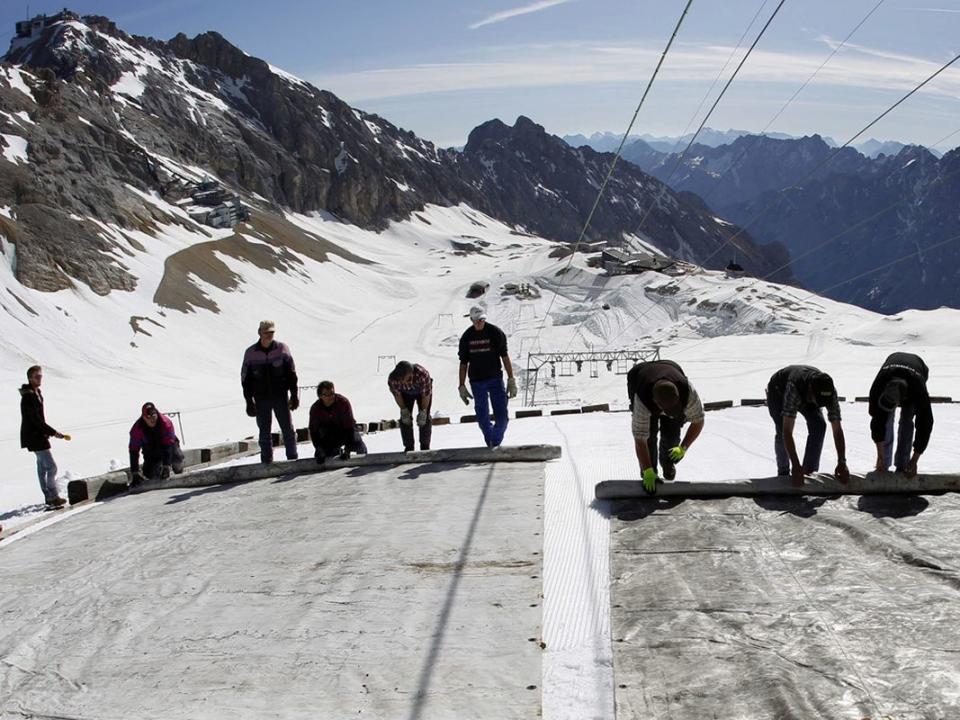Bjorn Lomborg: We need to research geoengineering alternatives to net-zero carbon reduction

Climate studies are becoming increasingly politicized. Harvard University recently shut down a key geoengineering research project because of intense backlash, despite the college’s aspiration to become “a global beacon on climate change.”
Geoengineering is one way humanity could deal with the very real problem of climate change. The standard approach — which most of the rich world is focused on — is to try to cut carbon emissions and divert investment to solar and wind energy. But this approach is very hard and expensive because fossil fuels still effectively power most of the world. Despite decades of political support for fossil fuel reductions, emissions are still increasing, with last year seeing the highest ever.
In contrast, geoengineering tries to directly reduce the planet’s temperature. One approach is to emit sulfur dioxide into the stratosphere, which would cool the planet. There is ample evidence this works: Erupting volcanoes typically pump particles into the stratosphere, with each particle reflecting a little sunlight back into space. In 1991, the Mount Pinatubo eruption cooled Earth by about 0.6°C for 18 months.
Harvard’s researchers weren’t attempting anything so grand. They simply wanted to launch a single high-altitude balloon that would release a tiny amount of particulates high above Earth. Their experiment would have gathered data showing how particles disperse and how much sunlight they reflect.
It’s only prudent to investigate other policies that could address parts of the problem of climate change. Even the United Nations admitted in 2019 that “there has been no real change in the global emissions pathway in the last decade,” despite the 2015 Paris Agreement. Since then, greenhouse gas emissions have continued to reach new record highs with “no end in sight to the rising trend,” according to a new report from the World Meteorological Organization. We’re simply not in a position where we can afford to ignore any pathway to solving climate change.
Unfortunately, as The Harvard Crimson reported, pressure from climate activists made this impossible for the scientists. Even high-profile campaigner Greta Thunberg criticized the first planned tests in northern Sweden. Then the Indigenous Saami Council — whose land the tests would be above — suggested firing a single balloon into the sky bore “risks of catastrophic consequences.” Politicians jumped aboard the bandwagon, including Sweden’s former foreign minister, who declared geoengineering was “crazy,” while young activists pushed academic funders to cut off such research.
In addition to the activists, the project’s lead researcher points a finger at a “vocal minority” of scientists who agree with campaigners that geoengineering could provide an excuse not to cut fossil fuels by highlighting another possible solution to climate change. The Saami Council opposed the Harvard experiment because the research “could compromise the world’s necessary efforts to achieve zero-carbon societies.”
That isn’t science, it’s dogma. The idea that there is only one correct policy — cutting carbon emissions to zero in a short time frame — is absurd, and especially so when this sole policy is failing globally. Geoengineering could be a very useful innovation, even if it harbours risks. It is the only feasible way humanity has ever identified to cut temperatures quickly. If we were to see the West Antarctic ice sheet starting to slip into the ocean — which would be a global disaster — no standard fossil fuel policy could make any significant change. Even if all nations cut their emissions to zero in a matter of months, which is not actually possible, temperatures would not come down but would only stop going up.
In contrast, geoengineering could, in principle, end the global temperature rise at a low cost. Its price tag over the 21st century is in the tens to low hundreds of billions of dollars, compared to standard policy costing tens of thousands of times more.
Of course, the world shouldn’t start pumping particulates into the atmosphere anytime soon. But we need to know whether this technology works and what negative impacts might be. We need such research partly because some countries and maybe even the world community may eventually want to consider using this approach but also because its cost is so low there is a risk that a single nation, a rogue billionaire or even a highly energized nongovernmental organization could deploy the technology on its own. We need to make sure the world knows the ramifications. That requires research.
Both the scientific journal Nature and the Obama administration have endorsed research into geoengineering. Even the Biden administration has offered measured support. Humanity needs to know what works and what problems might arise in future. Politicizing climate research for fear it might lead to politically unfavoured outcomes is bad for the world.
Bjorn Lomborg is president of the Copenhagen Consensus and visiting fellow at Stanford University’s Hoover Institution. His new book is “Best Things First,” one of The Economist’s best books of 2023.
Bookmark our website and support our journalism: Don’t miss the business news you need to know — add financialpost.com to your bookmarks and sign up for our newsletters here.

 Yahoo Finance
Yahoo Finance 